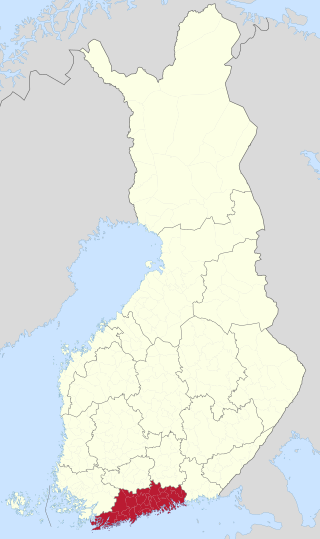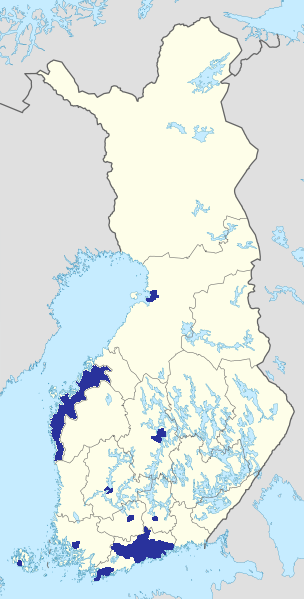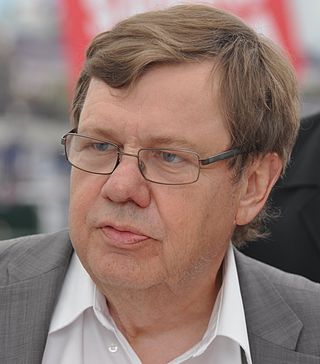
Finland, officially the Republic of Finland, is a Nordic country in Northern Europe. It borders Sweden to the northwest, Norway to the north, and Russia to the east, with the Gulf of Bothnia to the west and the Gulf of Finland to the south, opposite Estonia. Finland covers an area of 338,145 square kilometres (130,559 sq mi) and has a population of 5.6 million. Helsinki is the capital and largest city. The vast majority of the population are ethnic Finns. The official languages are Finnish and Swedish, of which 84.9 percent and 5.1 percent of the population speak the first as their mother tongue. Finland's climate varies from humid continental in the south to boreal in the north. The land cover is predominantly boreal forest biome, with more than 180,000 recorded lakes.

The demographics of Finland is monitored by the Statistics Finland. Finland has a population of over 5.6 million people, ranking it 19th out of 27 within the European Union. The average population density in Finland is 19 inhabitants per square kilometre (49/sq mi), making it the third most sparsely populated country in Europe, after Iceland and Norway. Population distribution is extremely uneven, with the majority of the population concentrated in the southern and western regions of the country. The majority of the Finnish population - approximately 73% - lives in urban areas. Approximately 1.58 million, or almost 30%, reside solely in the Helsinki Metropolitan Area. Conversely, the Arctic Lapland region contains only two inhabitants per square kilometre (5.2/sq mi).

Finland Swedish or Fenno-Swedish is a variety of the Swedish language and a closely related group of Swedish dialects spoken in Finland by the Swedish-speaking population, commonly also referred to as Finland Swedes, as their first language.

The Swedish-speaking population of Finland is a linguistic minority in Finland. They maintain a strong identity and are seen either as a separate cultural or linguistic group or, while not regularly, as a distinct nationality. They speak Finland Swedish, which encompasses both a standard language and distinct dialects that are mutually intelligible with the dialects spoken in Sweden and, to a lesser extent, other Scandinavian languages.

Sweden Finns are a Finnish-speaking national minority in Sweden.

Karelians are a Finnic ethnic group who are indigenous to the historical region of Karelia, which is today split between Finland and Russia. Karelians living in Russian Karelia are considered a distinct ethnic group closely related to Finnish Karelians, who are considered a subset of Finns. This distinction historically arose from Karelia having been fought over and eventually split between Sweden and Novgorod, resulting in Karelians being under different cultural spheres.

Karelia is an area in Northern Europe of historical significance for Russia, Finland, and Sweden. It is currently divided between northwestern Russia and Finland.
In 1999, the Minority Language Committee of Sweden formally declared five official minority languages: Finnish, Sámi languages, Romani, Yiddish, and Meänkieli.

Uusimaa is a region of Finland. It borders the regions of Southwest Finland, Tavastia Proper (Kanta-Häme), Päijänne Tavastia (Päijät-Häme), and Kymenlaakso. Finland's capital and largest city, Helsinki, along with the surrounding metropolitan area, are both contained in the region, and Uusimaa is Finland's most populous region. The population of Uusimaa is 1,734,000.
Standard Swedish denotes Swedish as a spoken and written standard language. While Swedish as a written language is uniform and standardized, the spoken standard may vary considerably from region to region. Several prestige dialects have developed around the major urban centers of Stockholm, Helsinki, Gothenburg and Malmö–Lund.

Greater Finland, was an irredentist and nationalist idea that was a subset of Pan-Finnicism which emphasized the territorial expansion of Finland. The most common concept of Greater Finland saw the country as defined by natural borders encompassing the territories inhabited by Finns and Karelians, ranging from the White Sea to Lake Onega and along the Svir River and Neva River—or, more modestly, the Sestra River—to the Gulf of Finland. Some proponents also included the Torne Valley, Ingria, and Estonia.

Swedish is the official language of Sweden and is spoken by the vast majority of the 10.23 million inhabitants of the country. It is a North Germanic language and quite similar to its sister Scandinavian languages, Danish and Norwegian, with which it maintains partial mutual intelligibility and forms a dialect continuum. A number of regional Swedish dialects are spoken across the country. In total, more than 200 languages are estimated to be spoken across the country, including regional languages, indigenous Sámi languages, and immigrant languages.
The toponyms of Finland result mainly from the legacy left by three linguistic heritages: the Finnish language, the Swedish language and Sami languages. Finland’s place names range from those of unknown or unrecognizable origins to more clearly derivable onomastics. There are both national and international recommendations on how to use the bilingual country's place names in texts written in different languages. In Finland, the Research Institute for the Languages of Finland and the National Land Survey of Finland are jointly responsible for the standardization of place names.
Finnish Kalo is a language of the Romani language family spoken by Finnish Kale. The language is related to but not mutually intelligible with Scandoromani or Angloromani.

Finland-Swedish Sign Language is a moribund sign language in Finland. It is now used mainly in private settings by older adults who attended the only Swedish school for the deaf in Finland, which was established in the mid-19th century by Carl Oscar Malm but closed in 1993. However, it has recently been taught to some younger individuals. Some 90 persons have it as their native language and it is spoken by around 300 people in total.
A variety of ethnic groups have long existed in Finland. Prominent examples include the Swedish speaking minority within the country and the Sami peoples in the north. With modern international migration to Finland, different ethnolinguistics groups populate the country, most prominently in Helsinki.
Unna Junná is a children's television program produced by Finnish public broadcaster Yle Sámi Radio several different Sámi languages. It was the first Sámi-language children's program on Finnish TV and it now airs in Northern, Inari, and Skolt Sámi languages. Since 2007, Unna Junná has aired on Yle and SVT television channels in Finland and Sweden respectively.
The various regional and minority languages in Europe encompass four categories:

Lars Evald Christoffer Taxell is a Finland Swedish politician, business leader and former chancellor of Åbo Akademi University. He is known in Finland as an influential decision-maker in Finland Swedish politics, economics and culture. In 2009, he was chosen by Iltalehti as the third most influential decision-maker in the Finnish economy after Björn Wahlroos and Antti Herlin.


















